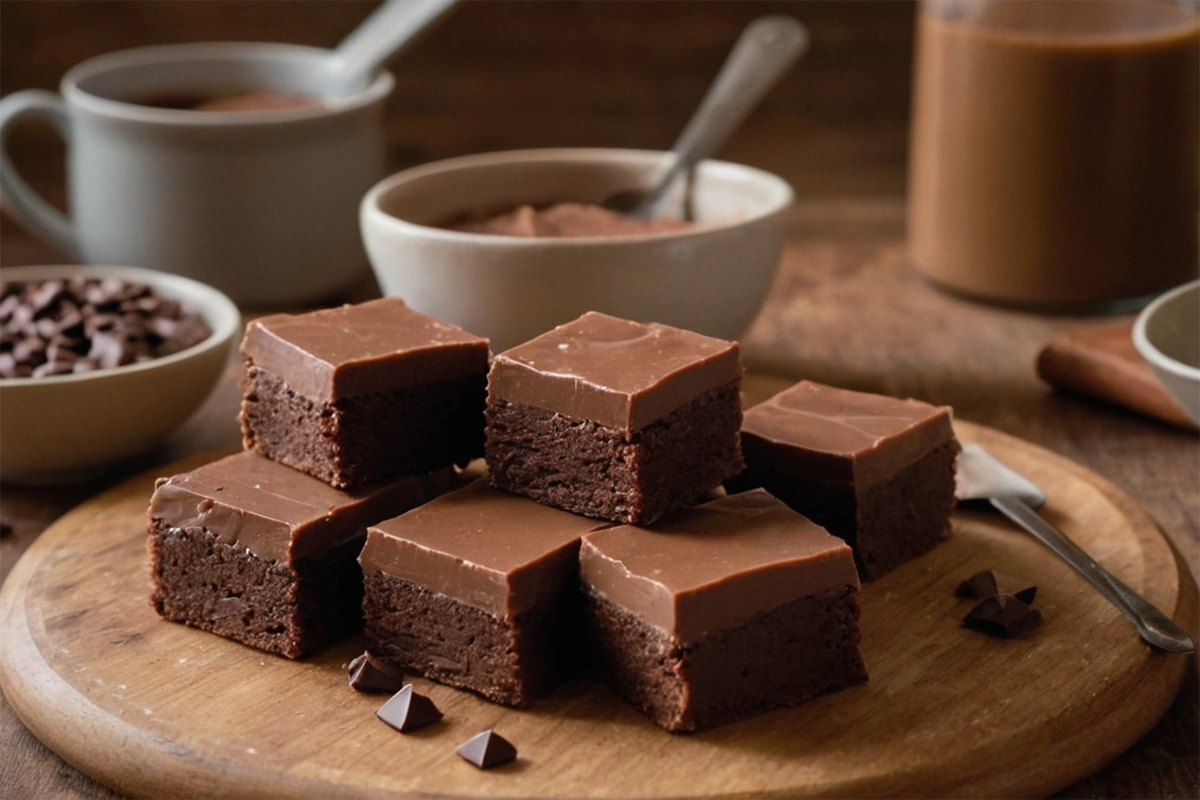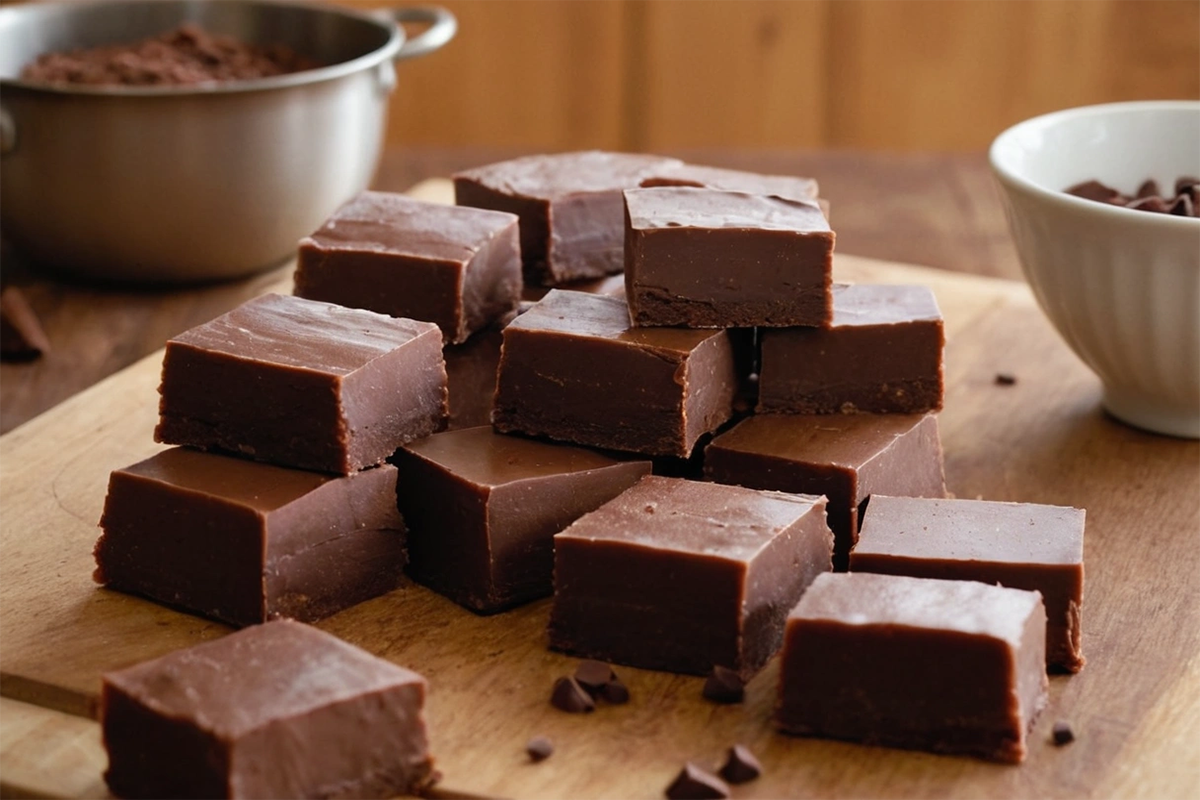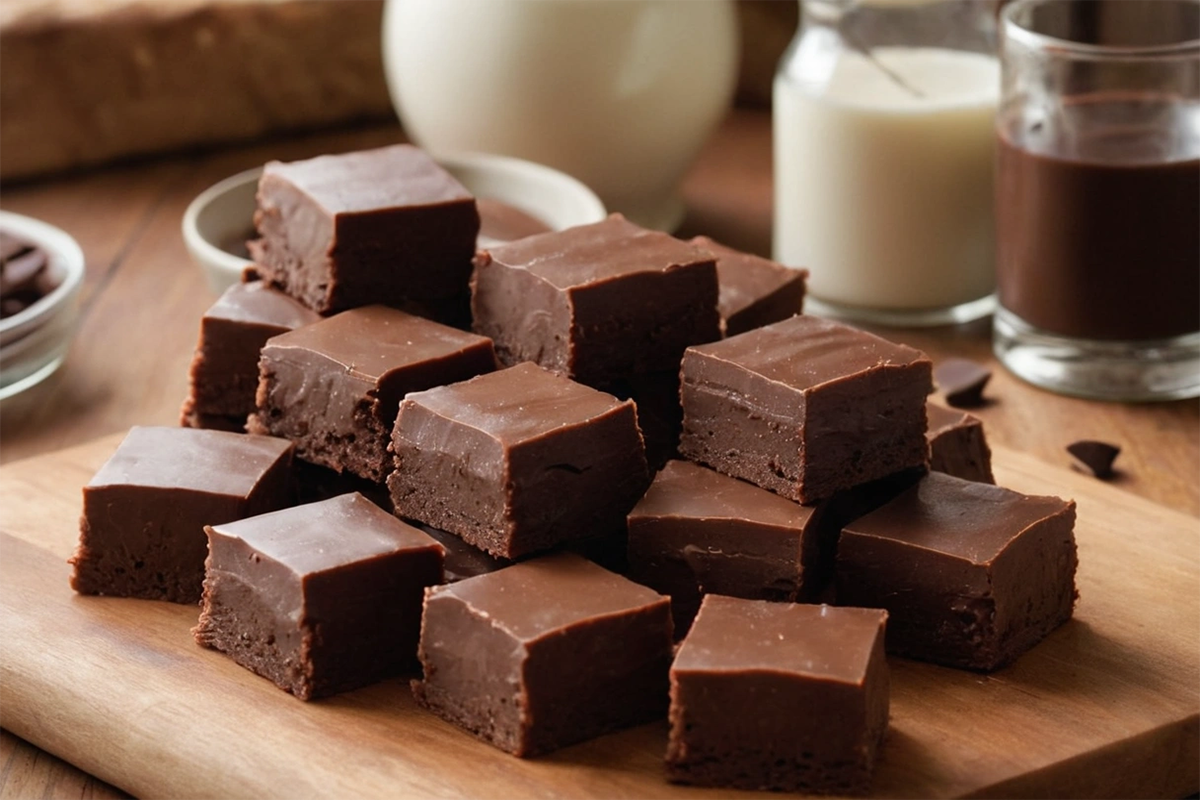Fudge is a classic treat that has been enjoyed for generations. Whether it’s a holiday staple or a year-round indulgence, nothing beats the rich, creamy texture of homemade fudge. However, achieving that perfect consistency can be challenging. So, what is the secret to perfect fudge? This article dives into the ingredients, techniques, and tips that will help you master the art of fudge making.
Introduction to the Secret to Perfect Fudge
Fudge is one of those timeless treats that can bring back memories of childhood, holidays, and family gatherings. The smooth, melt-in-your-mouth texture of a well-made fudge is irresistible. However, making perfect fudge requires a bit of science and a lot of patience. Understanding the fundamentals of fudge making will not only help you avoid common mistakes but also ensure that your fudge turns out perfect every time.
For those new to fudge making, AllRecipes provides a comprehensive guide to getting started, while The Gardening Cook offers some foolproof tips to ensure success.
The History of Fudge
The origins of fudge are somewhat murky, but it is widely believed to have been an American invention in the late 19th century. The first known recipe for fudge appeared in a letter written in 1886, describing the sweet as a happy accident. By the early 20th century, fudge had become a popular confection, especially among college students, who would make it as a late-night snack.
Fudge has evolved significantly since its inception, with countless variations and flavors now available. Despite its humble beginnings, fudge has become a staple in American culture, particularly during the holiday season. It’s a treat that brings people together, whether it’s being made in a family kitchen or given as a homemade gift.
Essential Ingredients for Perfect Fudge
The secret to perfect fudge lies in the ingredients you choose. Each component plays a crucial role in the texture, flavor, and consistency of the final product.
1. Sugar
- Role in Fudge: Sugar is the backbone of any fudge recipe. It not only provides sweetness but also contributes to the structure of the fudge. When sugar is dissolved and heated, it begins to crystallize, which is essential for creating the smooth texture of fudge.
- Granulated Sugar vs. Other Sweeteners: While granulated sugar is the most common choice, some recipes call for brown sugar, powdered sugar, or even condensed milk, each imparting a slightly different flavor and texture.
2. Dairy: A Key Ingredient in the Secret to Perfect Fudge
- Butter and Milk: The combination of butter and milk (or cream) is crucial for adding richness and creaminess to fudge. The fat from the butter and the proteins from the milk help create a smooth texture.
- Impact on Texture: The quality of your dairy products will directly affect the final outcome. Using high-quality butter and fresh milk or cream will give your fudge a more luxurious texture.
3. Chocolate
- Choosing the Right Chocolate: The type of chocolate you use will greatly influence the flavor of your fudge. Dark chocolate, milk chocolate, and white chocolate each bring their own unique taste profiles.
- Quality Matters: Always opt for good-quality chocolate, as lower-quality options can result in a grainy texture and less intense flavor.
4. Flavorings
- Vanilla and Other Extracts: Adding vanilla extract is a classic way to enhance the flavor of your fudge. Other extracts, such as almond or peppermint, can also be used to create different variations.
- Salt: A pinch of salt can help balance the sweetness and bring out the flavors of the chocolate and other ingredients.
The Science Behind the Secret to Perfect Fudge
Making perfect fudge is not only about technique but also about understanding the science behind it. By grasping the scientific principles of fudge making, you can achieve the perfect texture and consistency.
1. Sugar Crystallization
- Importance of Crystallization: The key to smooth fudge lies in controlling the crystallization of sugar. When sugar is heated, it dissolves in the liquid. As the mixture cools, the sugar begins to crystallize. If the crystals are too large, the fudge will be grainy. The goal is to create very small crystals, which result in a smooth, creamy texture.
- Avoiding Graininess: To prevent large sugar crystals from forming, it’s important to stir the mixture carefully and avoid disturbing it too much during the cooling process.
2. Temperature Control
- Cooking to the Right Temperature: The temperature of the fudge mixture is crucial. If it’s cooked too little, the fudge will be too soft and won’t set properly. If it’s cooked too much, it will become hard and crumbly. A candy thermometer is an essential tool for monitoring the temperature.
- The Soft Ball Stage: The ideal temperature for fudge is around 234°F to 240°F, also known as the soft ball stage. At this point, the sugar concentration is just right for creating a fudge that is firm yet pliable.
3. Cooling Process : Locking in the Secret to Perfect Fudge
- Why Cooling Matters: The way you cool your fudge mixture will also affect the final texture. Allowing the fudge to cool slowly at room temperature is best, as it gives the sugar crystals time to form properly.
- Patience is Key: Resist the temptation to rush the cooling process by putting the fudge in the refrigerator. Rapid cooling can cause the sugar to crystallize too quickly, leading to a grainy texture.
Common Mistakes and How to Avoid Them
Even experienced cooks can run into issues when making fudge. Here are some common mistakes and tips on how to avoid them.
1. Overcooking or Undercooking
- Signs of Overcooked Fudge: Overcooked fudge will be hard and crumbly rather than smooth and creamy. This happens when the mixture is heated to too high a temperature.
- Signs of Undercooked Fudge: If the fudge is undercooked, it won’t set properly and will be too soft. It may also have a greasy texture.
- Tip: Use a candy thermometer to ensure that the mixture reaches the correct temperature.
2. Grainy Texture
- Causes of Graininess: Grainy fudge is usually the result of sugar crystallizing too early in the cooking process. This can happen if the mixture is stirred too much or if it cools too quickly.
- Prevention: To avoid a grainy texture, stir the mixture gently and avoid jostling the pan while the fudge is cooling.
3. Incorrect Ingredient Ratios
- Importance of Accuracy: Fudge recipes require precise measurements. Using too much or too little of an ingredient can throw off the texture and flavor of the fudge.
- Tip: Use a kitchen scale to measure ingredients accurately, especially when dealing with sugar and butter.
Techniques for Achieving Perfect Fudge
Mastering the techniques of fudge making is essential for achieving that perfect batch every time.
1. Stirring
- When to Stir: Stirring is important in the early stages of making fudge to ensure that the sugar dissolves completely. However, once the mixture begins to boil, it’s crucial to stop stirring to prevent the sugar from crystallizing prematurely.
- How Often to Stir: If your recipe requires stirring during the cooking process, do so gently and only as often as needed. Over-stirring can lead to grainy fudge.
2. Temperature Management
- Monitoring Temperature: Keeping a close eye on the temperature is essential. A candy thermometer is the most reliable tool for this, but you can also test the mixture by dropping a small amount into cold water to see if it forms a soft ball.
- Using a Double Boiler: If you’re concerned about overheating, consider using a double boiler. This method allows for more even heat distribution and reduces the risk of burning the mixture.
3. Cooling Process: Cooling and Setting: Final Steps to Perfect Fudge
- Best Practices for Cooling: Allow the fudge to cool at room temperature without disturbing it. This ensures that the sugar crystals form slowly and evenly, resulting in a smooth texture.
- Importance of Patience: Once the fudge is poured into the pan, it’s important to let it cool and set for several hours or even overnight. Rushing this process can lead to fudge that is too soft or grainy.
Fudge Variations and Flavor Combinations
Once you’ve mastered the basic recipe, you can start experimenting with different flavors and combinations to create unique fudge variations.
1. Classic Chocolate Fudge
- Traditional Recipe: Classic chocolate fudge is typically made with a simple combination of sugar, butter, milk, and chocolate. As a result, you get a rich, smooth, and creamy treat that never goes out of style.
- Tips for Success: Use high-quality chocolate and avoid overcooking the mixture to achieve the perfect texture.
2. Peanut Butter Fudge
- Adding Peanut Butter: Peanut butter fudge is a delicious twist on the classic recipe. The addition of peanut butter adds a rich, nutty flavor and a slightly softer texture.
- Pro Tip: Use creamy peanut butter for a smooth consistency, or chunky peanut butter if you prefer a bit of texture in your fudge.
3. Marble Fudge
- Creating the Marble Effect: Marble fudge is made by swirling together two different flavors, such as chocolate and vanilla, to create a beautiful marbled appearance.
- How to Achieve It: To create the marble effect, pour the two mixtures into the pan alternately, then use a knife to swirl them together gently.
4. Holiday Fudge
- Seasonal Flavors: Holiday fudge is a great way to add festive flair to your fudge-making. Consider adding flavors like peppermint, cinnamon, or caramel for a seasonal twist.
- Garnishing: Top holiday fudge with crushed candy canes, chopped nuts, or a drizzle of white chocolate for an extra-special touch.
Frequently Asked Questions About the Secret to Perfect Fudge
1. What’s the best type of chocolate to use for fudge?
High-quality chocolate is essential for making perfect fudge. Dark chocolate is a popular choice because it provides a rich, deep flavor, but milk chocolate or white chocolate can also be used depending on your preference.
2. Why did my fudge turn out grainy?
Grainy fudge typically occurs when sugar crystals form too early in the process. This issue can arise if you stir the mixture too much or if it cools too quickly. To prevent this, stir gently and avoid disturbing the fudge while it’s cooling.
3. Can I fix fudge that didn’t set properly?
If your fudge didn’t set properly, you can try reheating it to the correct temperature and then cooling it again. Alternatively, you can repurpose the fudge by using it as a topping for ice cream or as a filling for cookies.
4. Is there a way to make fudge without a candy thermometer?
Yes, you can indeed make fudge without a candy thermometer by using the cold water test. First, drop a small amount of the mixture into a glass of cold water. If it forms a soft ball that you can easily roll between your fingers, then it’s ready.
5. How can I make fudge healthier without sacrificing flavor?
To make fudge healthier, consider using dark chocolate, which has less sugar than milk chocolate, and substituting part of the sugar with a natural sweetener like honey or maple syrup. You can also reduce the amount of butter or use a plant-based alternative.
Storing and Serving the Secret to Perfect Fudge
Moreover, proper storage and serving techniques are essential for maintaining the quality of your fudge.
1. Proper Storage
- Storing at Room Temperature: Store fudge at room temperature in an airtight container for up to two weeks. Keeping it sealed prevents it from drying out.
- Freezing Fudge: If you want to store fudge for a longer period, you can freeze it. Wrap each piece in wax paper, then place it in an airtight container or freezer bag. Fudge can be frozen for up to three months.
2. Serving Suggestions: Showcasing the Secret to Perfect Fudge
- How to Serve: Serve fudge at room temperature for the best texture. If you stored it in the refrigerator or freezer, let it come to room temperature before serving.
- Pairing with Beverages: Fudge pairs wonderfully with coffee, tea, or even a glass of milk. For a more decadent experience, try serving it with a dessert wine.
Conclusion: Fully Unlocking the Secret to Perfect Fudge
The secret to perfect fudge lies not only in understanding the science but also in using high-quality ingredients and mastering the right techniques. Indeed, from carefully controlling the temperature to allowing the fudge to cool properly, each step plays a crucial role in achieving that smooth, creamy texture that everyone loves. Once you’ve mastered the basics, you can start experimenting with different flavors and variations to create your own unique fudge recipes. So, roll up your sleeves, grab your candy thermometer, and get ready to make some perfect fudge!



